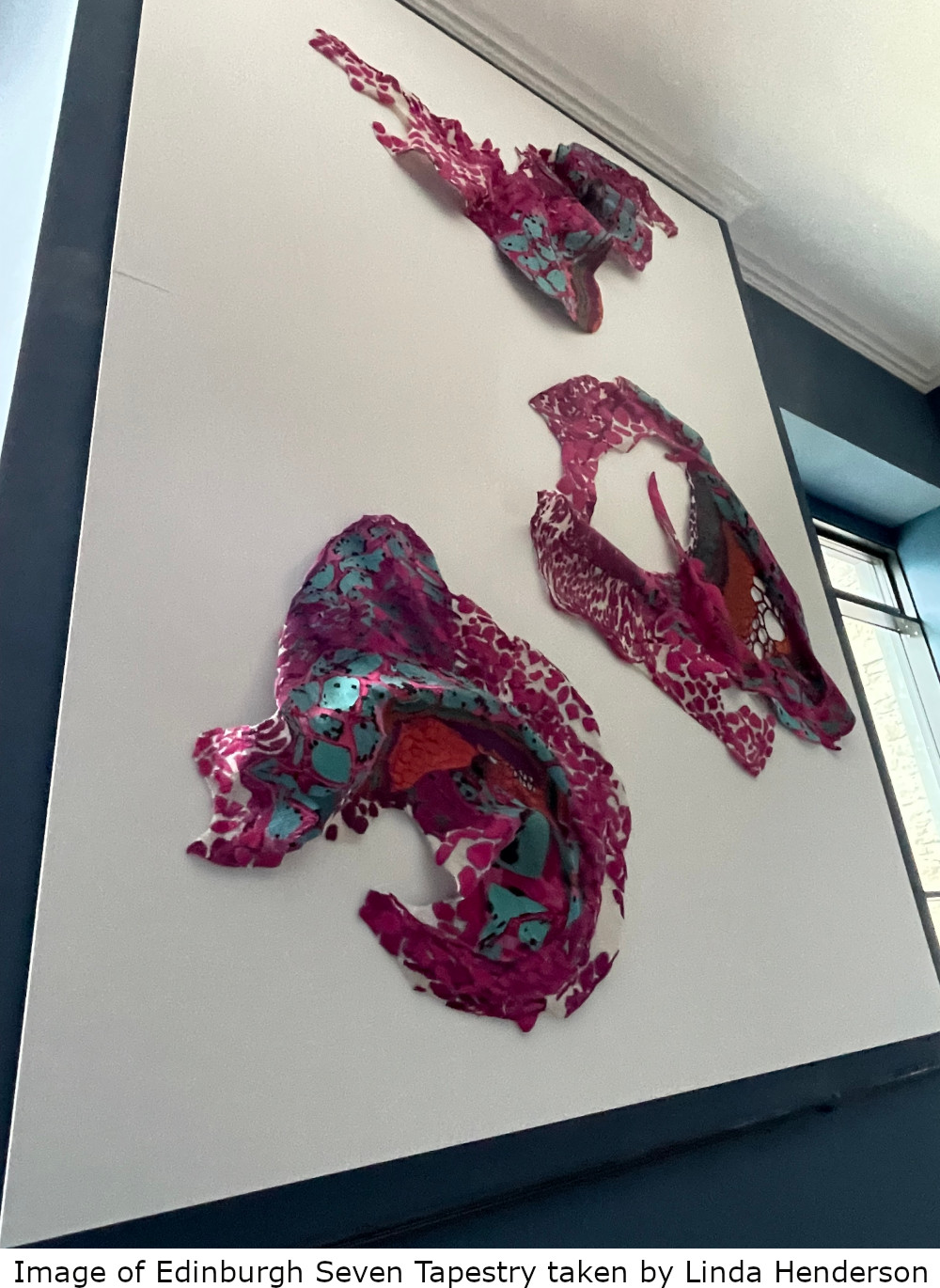 In Issue 36 of Tapestry Weaver, Lee Jenner wrote a comprehensive review of the Edinburgh Seven Tapestry, woven at Dovecot Studios and celebrating the first women to attend university in the UK in 1869. This multidimensional work was unveiled in the V&A sculpture gallery as part of International Women's Day events on May 8th. In her review, Lee wrote "Boundaries, movement and absence are key concepts that the artist [Christine Borland] wanted to get across and the finished triptych certainly achieves that....[it] doesn't have anything like the standard boundaries of a tapestry. It doesn't have a solid shape of any kind" and and she suggested that, although it was great that the tapestry was hung in the sculpture gallery, the curation and hanging of the tapestry at the V&A could have been better. The tapestry then moved to its permanent home, the Edinburgh Futures Institute, where it hangs against a wall and Lee reflected that it would be interesting to hear what others thought of it there.
In Issue 36 of Tapestry Weaver, Lee Jenner wrote a comprehensive review of the Edinburgh Seven Tapestry, woven at Dovecot Studios and celebrating the first women to attend university in the UK in 1869. This multidimensional work was unveiled in the V&A sculpture gallery as part of International Women's Day events on May 8th. In her review, Lee wrote "Boundaries, movement and absence are key concepts that the artist [Christine Borland] wanted to get across and the finished triptych certainly achieves that....[it] doesn't have anything like the standard boundaries of a tapestry. It doesn't have a solid shape of any kind" and and she suggested that, although it was great that the tapestry was hung in the sculpture gallery, the curation and hanging of the tapestry at the V&A could have been better. The tapestry then moved to its permanent home, the Edinburgh Futures Institute, where it hangs against a wall and Lee reflected that it would be interesting to hear what others thought of it there.
Linda Henderson didn't see the tapestry at the V&A but she had seen the blog article and photos on the Dovecot Studios website. She contacted us with her views which strike a strong accord with Lee's comments on how the tapestry is displayed and the role of the curator in that critical process. Linda wrote:
"To me, it is a piece with immense fluidity and energy clearly designed to be hung in space. The V&A did this but utterly out of reach for detailed consideration. It is a little like a flag flying. The colours are highly impactful and the shape evident but for weavers hanging a piece where binoculars are the only solution to understanding the work is unhelpful, to say the least.
I have visited it at its final resting place in Edinburgh. I was grateful for the careful guidance given me by Dovecot staff for I would never have found it else. Perhaps for the University of Edinburgh folk The Futures Institute is a 'well-kent' building but as a general visitor not knowing the campus area it is a trial to locate. Then there is the sense that the general visitor doesn't belong here - it feels like walking into an admin block with no obvious purpose and zero impact or information. Aha! My trusty Dovecot informant told me to turn left through the doors and I would find the work on a lower staircase. I did. It is. And the hanging is a travesty...
This work of dynamism is hanging flat on the outside wall of a descending staircase laid out as three separate elements that are not obviously connected except by their colour. There is a view across the stairwell that takes in the whole hung area but in trying to get closer the only option is to take the stairs and very rapidly you are excluded from any coherent view.
I came away immensely disappointed and disillusioned with how curators see multidimensional tapestries (I use this word rather than simply '3-D' because it very specifically relates to historical and political events across over a century of time and was designed using state-of-the-art technology). It was as though the curator is of the school of "tapestry must lie flat" and has done their best to make it conform. I attach a photo - about the best I could manage in the circumstances...I was hanging over the landing rail fearing I might tip over and fall to a certain multicoloured splodge on the basement floor."
Have you seen the Edinburgh Seven Tapestry, either at the V&A or at the Edinburgh Futures Institute? What are your views on how the two institutions chose to display it? Could the curators have approached the process of planning for and hanging a tapestry differently?



Add your comment